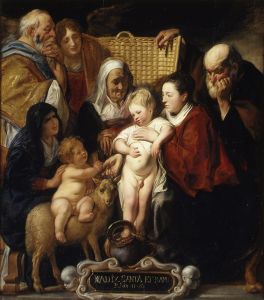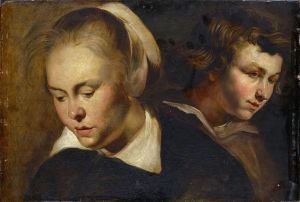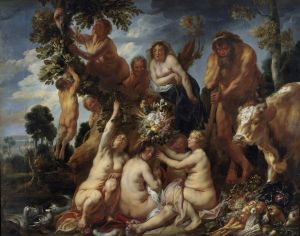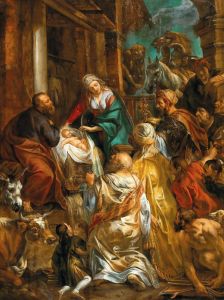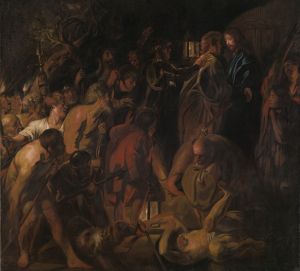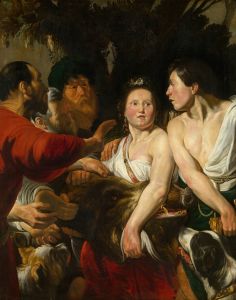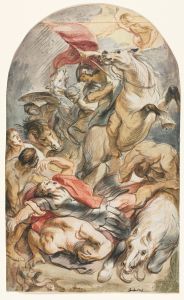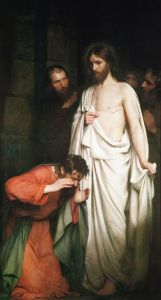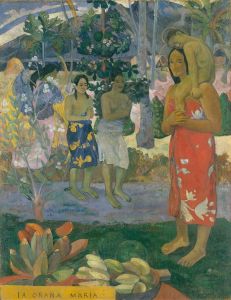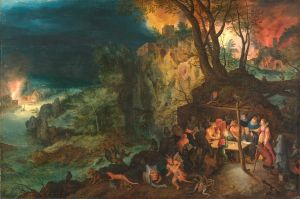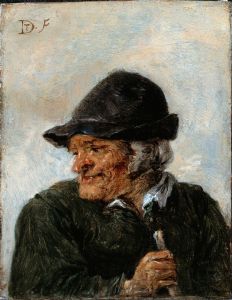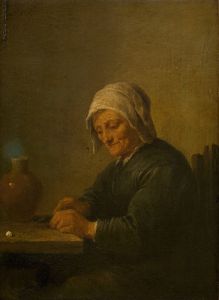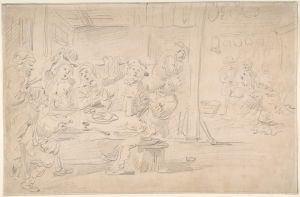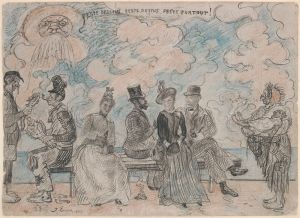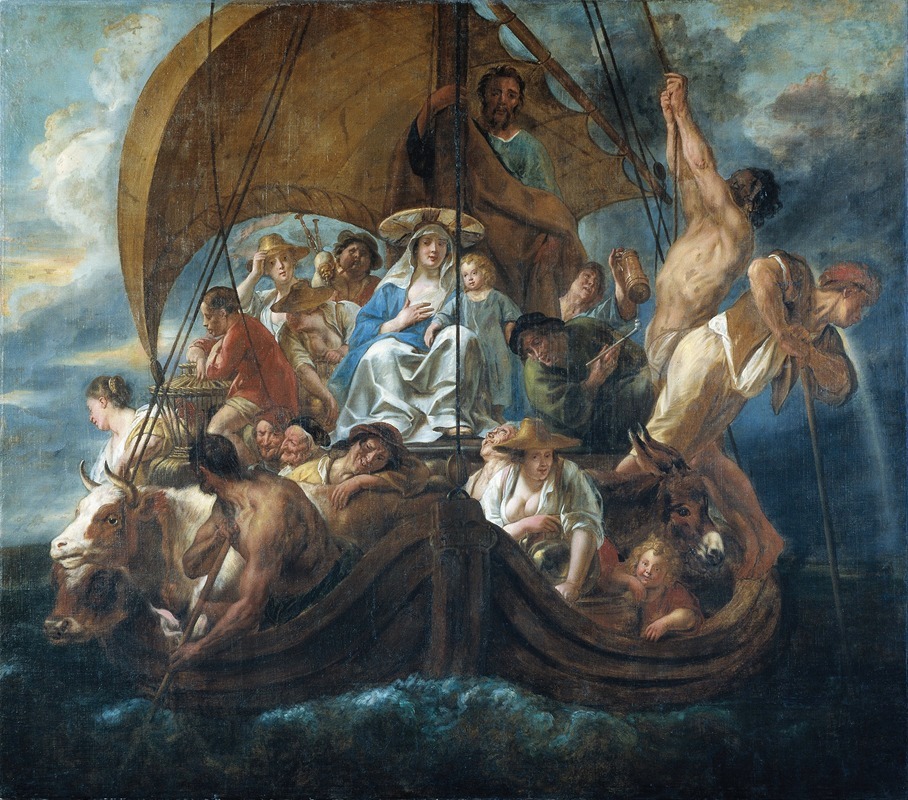
The Holy Family With Various Persons And Animals In A Boat
A hand-painted replica of Jacob Jordaens’s masterpiece The Holy Family With Various Persons And Animals In A Boat, meticulously crafted by professional artists to capture the true essence of the original. Each piece is created with museum-quality canvas and rare mineral pigments, carefully painted by experienced artists with delicate brushstrokes and rich, layered colors to perfectly recreate the texture of the original artwork. Unlike machine-printed reproductions, this hand-painted version brings the painting to life, infused with the artist’s emotions and skill in every stroke. Whether for personal collection or home decoration, it instantly elevates the artistic atmosphere of any space.
Jacob Jordaens, a prominent Flemish Baroque painter, is known for his dynamic compositions and vibrant use of color. One of his works, The Holy Family with Various Persons and Animals in a Boat, is a painting that reflects his characteristic style and thematic interests. However, specific details about this particular artwork, including its date of creation, provenance, and historical context, are not widely documented in existing art historical literature.
Jordaens was a contemporary of Peter Paul Rubens and Anthony van Dyck, and his works often depicted religious, mythological, and genre scenes. He was known for his ability to blend dramatic lighting, expressive figures, and rich textures, which were hallmarks of the Baroque period. While Jordaens frequently explored biblical themes, his interpretations often included lively, earthy elements that appealed to a broader audience.
Given the lack of detailed information about The Holy Family with Various Persons and Animals in a Boat, it is difficult to provide a comprehensive analysis of the painting. The title suggests a religious subject, likely referencing the Holy Family—Mary, Joseph, and the infant Jesus—accompanied by other figures and animals in a boat. This imagery may have symbolic significance, possibly alluding to themes of salvation, journey, or divine protection, which were common in Christian art of the Baroque era. However, without further documentation or scholarly analysis, these interpretations remain speculative.
No additional verified information about this specific artwork is available at this time.





